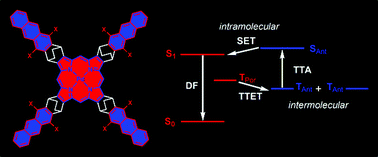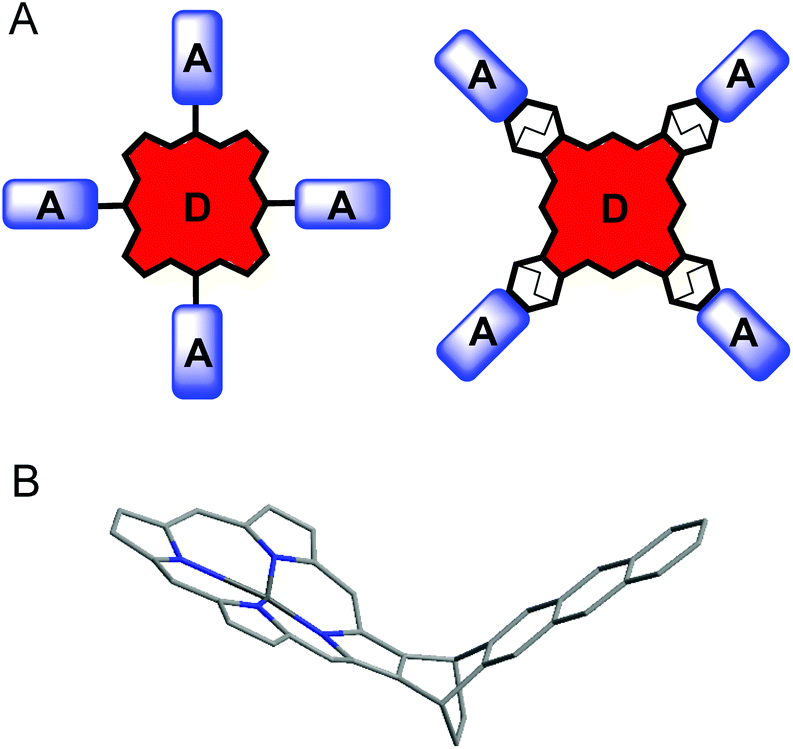 .
.The synthesis and photophysical characterization of a palladium(II) porphyrin – anthracene dyad bridged via short and conformationally rigid bicyclo[2.2.2]octadiene spacer were achieved. A spectroscopic investigation of the prepared molecule in solution has been undertaken to study electronic energy transfer in excited singlet and triplet states between the anthracene and porphyrin units. By using steady-state and time-resolved photoluminescence spectroscopy it was shown that excitation of the singlet excited state of the anthracene leads to energy transfer to the lower-lying singlet state of porphyrin. Alternatively, excitation of the porphyrin followed by intersystem crossing to the triplet state leads to very fast energy transfer to the triplet state of anthracene. The rate of this energy transfer has been determined by transient absorption spectroscopy. Comparative studies of the dynamics of triplet excited states of the dyad and reference palladium octaethylporphyrin (PdOEP) have been performed.


SEE..................
http://pubs.rsc.org/en/content/articlelanding/2015/dt/c5dt03784k#!divAbstract
Paper
Interplay between singlet and triplet excited states in a conformationally locked donor–acceptor dyad
*
Corresponding authors
a
Max Planck
Institute for Polymer Research, Ackermannweg 10, D-55128 Mainz, Germany
E-mail: filatovm@tcd.ie
E-mail: filatovm@tcd.ie
b
Institute of
Polymers, Bulgarian Academy of Sciences, Acad. G. Bonchev Str., block
103-A, BG – 1113 Sofia, Bulgaria
c
Physical Sciences
and Engineering Division (PSE), Material Science and Engineering (MSE),
Solar and Photovoltaics Engineering Research Center (SPERC), King
Abdullah University of Science and Technology (KAUST), Thuwal
23955-6900, Kingdom of Saudi Arabia
d
Optics and
Spectroscopy Department, Faculty of Physics, Sofia University “St.
Kliment Ochridski”, 5 James Bourchier, 1164 Sofia, Bulgaria
e
Freiburg Institute
for Advanced Studies (FRIAS), Albert-Ludwigs-Universität Freiburg,
Albertstraße 19, D-79104 Freiburg, Germany
Dalton Trans., 2015,44, 19207-19217
DOI: 10.1039/C5DT03784K

Mikhail A Filatov
Research Experience
/////////